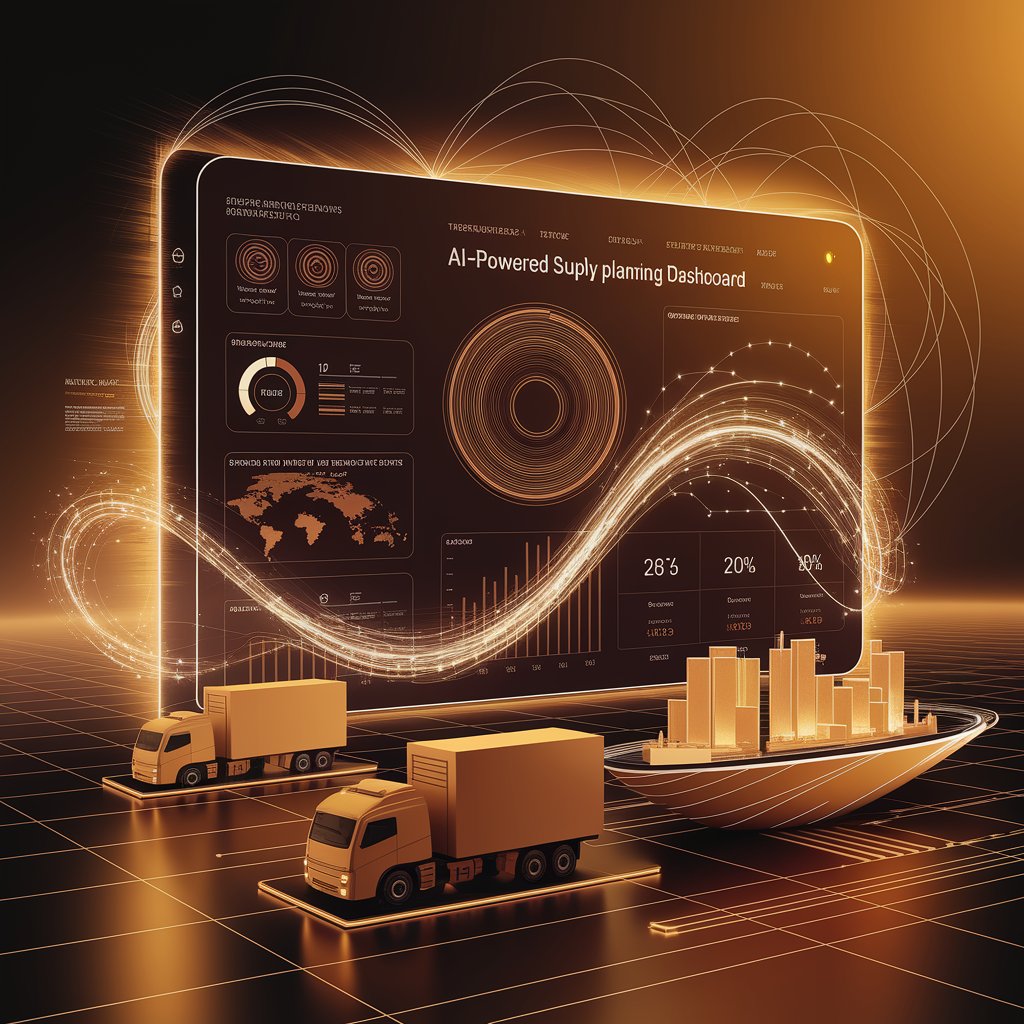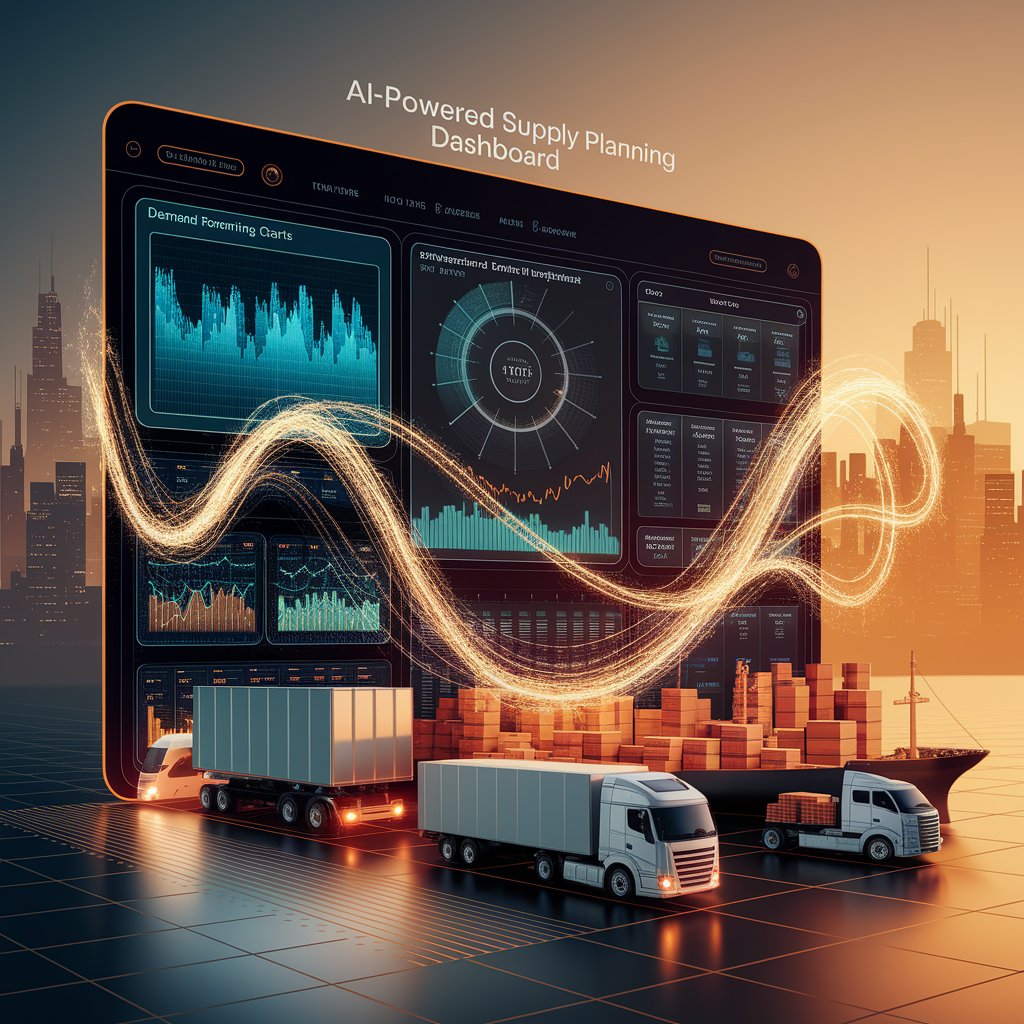AI-Powered Supply Planning: Building Smarter and Resilient Supply Chains

Introduction
This is where AI-powered supply planning comes in. By using artificial intelligence, machine learning, and predictive analytics, companies can better anticipate demand, balance inventory, and optimize logistics resources in real time.
What Is AI-Powered Supply Planning?
AI-powered supply planning is the integration of artificial intelligence into supply chain planning processes. Unlike conventional planning tools, AI continuously learns from data to adjust forecasts, optimize stock levels, and recommend smarter supply decisions.
Key focus areas include:
- Demand forecasting with real-time market signals
- Inventory optimization across warehouses and retail outlets
- Supplier performance evaluation based on predictive insights
- Production scheduling aligned with demand variability
- Logistics synchronization to ensure on-time, cost-efficient deliveries

Key Features of AI-Powered Supply Planning
- Predictive Demand Forecasting – Anticipates demand shifts using sales history, seasonality, and external trends.
- Automated Inventory Balancing – Dynamically redistributes stock across warehouses.
- Supplier Risk Analysis – AI identifies potential delays or disruptions in sourcing.
- Scenario Modeling – Simulates “what-if” situations for risk mitigation.
- Real-Time Dashboards – Provide planners with live insights and alerts.
- Sustainability Optimization – Suggests greener options for sourcing and transportation.
Benefits of AI-Powered Supply Planning 📈
- Accuracy – More precise demand forecasts reduce shortages and overstocking.
- Efficiency – Automates repetitive planning tasks and speeds up decision-making.
- Cost Savings – Reduces storage, procurement, and transportation costs.
- Resilience – Anticipates disruptions and proposes contingency plans.
- Customer Satisfaction – Improves service levels with consistent on-time deliveries.
- Sustainability – Cuts waste and lowers carbon emissions.

Real-World Applications
- Retail & E-commerce – Forecast demand surges during sales and seasonal peaks.
- Manufacturing – Align production schedules with AI-based demand planning.
- Pharmaceuticals – Ensure availability of critical drugs with predictive inventory.
- Food & Beverage – Balance freshness with demand variability.
- Logistics Providers – Synchronize fleet and warehouse operations with supply forecasts.
Challenges in AI-Powered Supply Planning
- Data Quality Issues – Poor or incomplete data reduces accuracy.
- Integration Barriers – Legacy ERP and WMS systems may not connect easily.
- High Initial Investment – AI tools require upfront costs and skilled resources.
- Cultural Resistance – Teams may hesitate to trust AI-driven recommendations.
- External Uncertainty – Global shocks (pandemics, conflicts) can outpace models.

Best Practices for Implementation
- Start Small – Pilot AI planning for a specific product category or region.
- Prioritize Data Quality – Clean and unify data across the supply chain.
- Integrate with Core Systems – Connect ERP, TMS, and WMS for seamless planning.
- Combine AI with Human Oversight – Use AI for insights, humans for context.
- Leverage Scenario Planning – Prepare for disruptions by testing multiple outcomes.
- Measure ROI Continuously – Track cost savings, efficiency, and service levels.
The Future of AI-Powered Supply Planning 🚀
- Self-Optimizing Supply Chains – AI systems making adjustments autonomously.
- Digital Twins – Virtual replicas simulating entire supply networks.
- Blockchain Integration – Secure and transparent supplier performance tracking.
- AI-Enhanced Sustainability – Optimizing supply chains for carbon footprint reduction.
- Collaborative AI Platforms – Shared visibility and planning across suppliers, carriers, and customers.
Conclusion
AI-powered supply planning is reshaping how companies manage demand, inventory, and logistics. By combining predictive analytics with real-time data, businesses can cut costs, improve service levels, and build resilient supply chains ready for disruption.
For companies competing in global markets, adopting AI-powered supply planning is not just a digital upgrade—it’s a strategic necessity.
